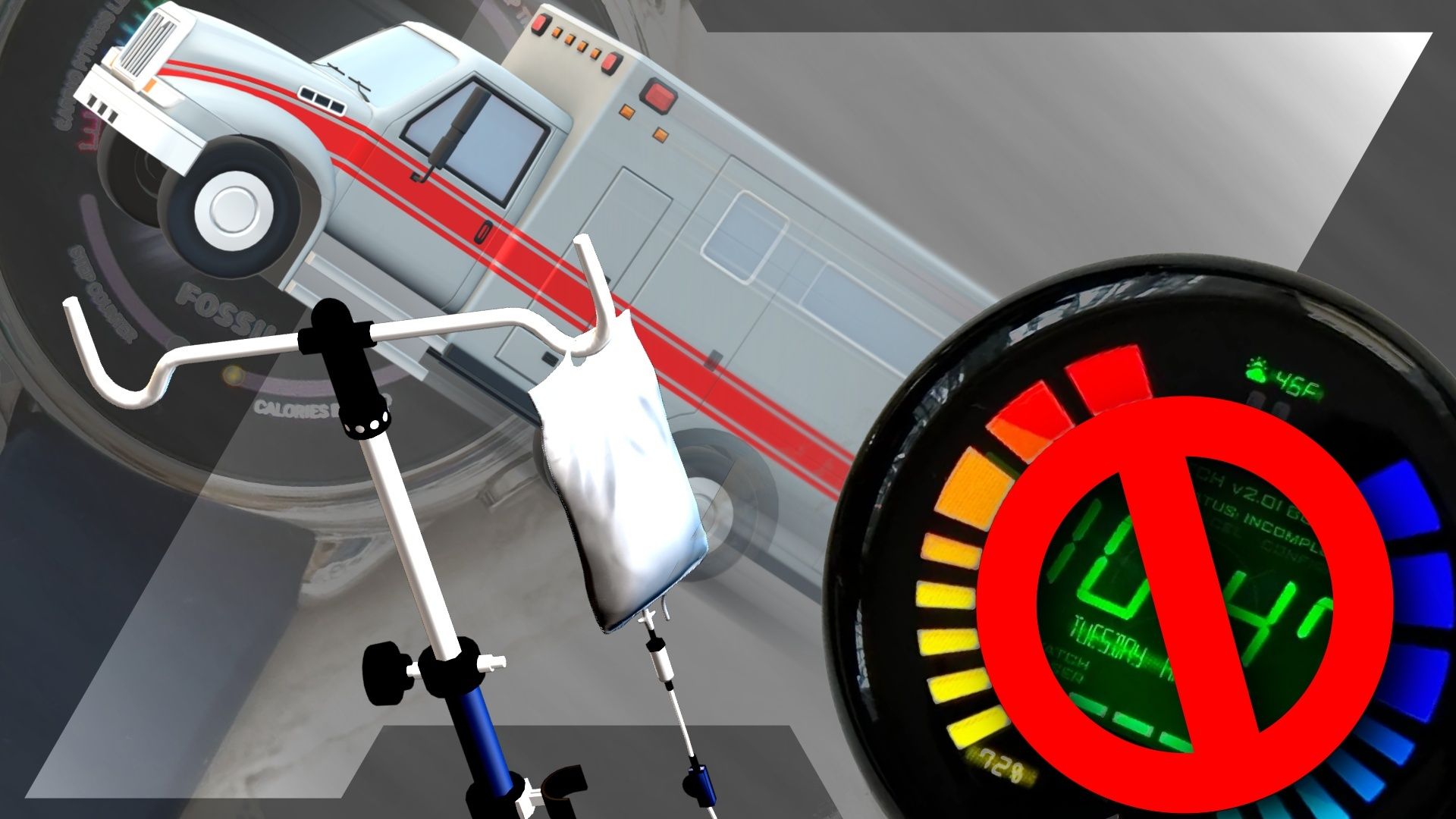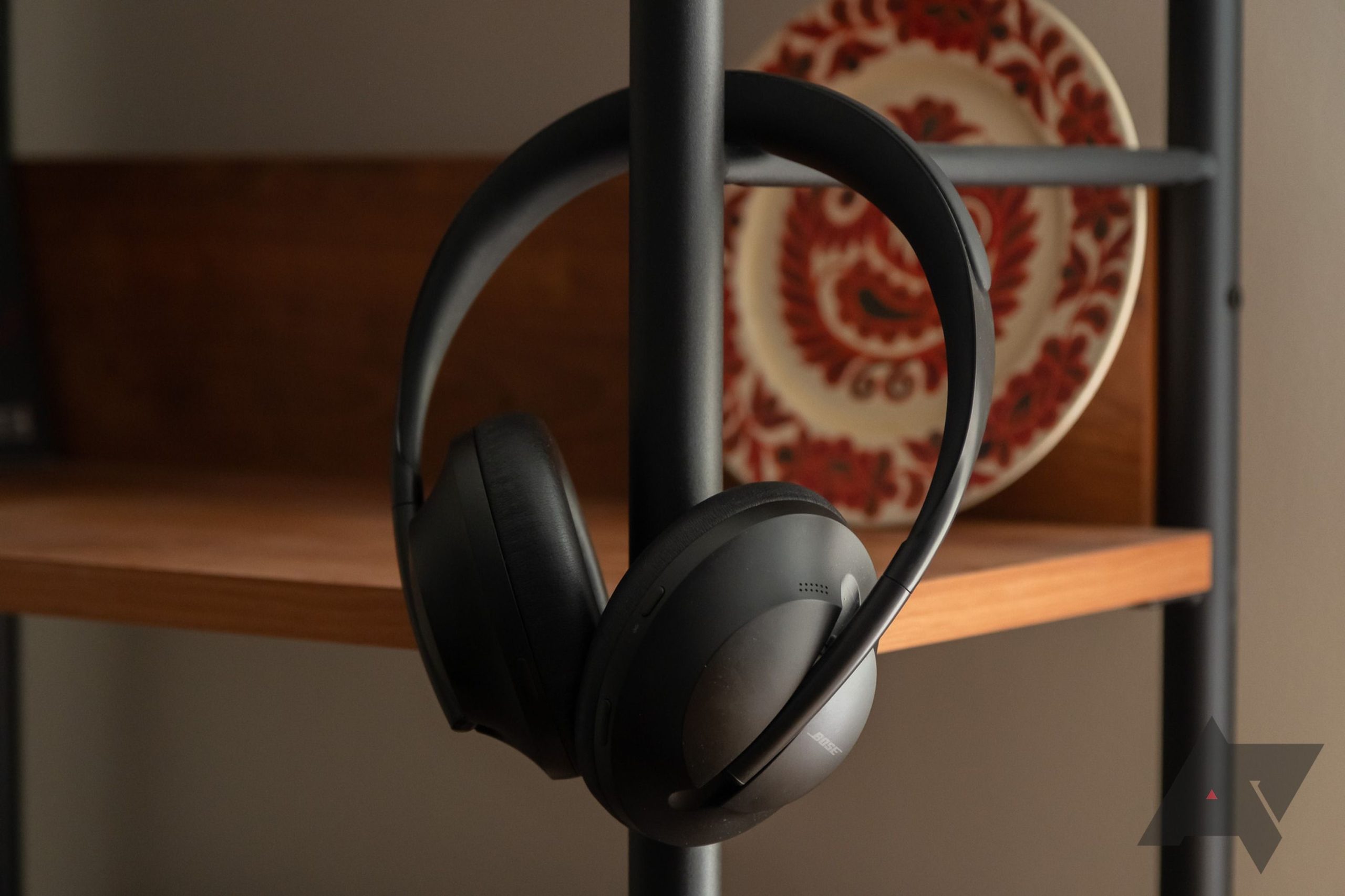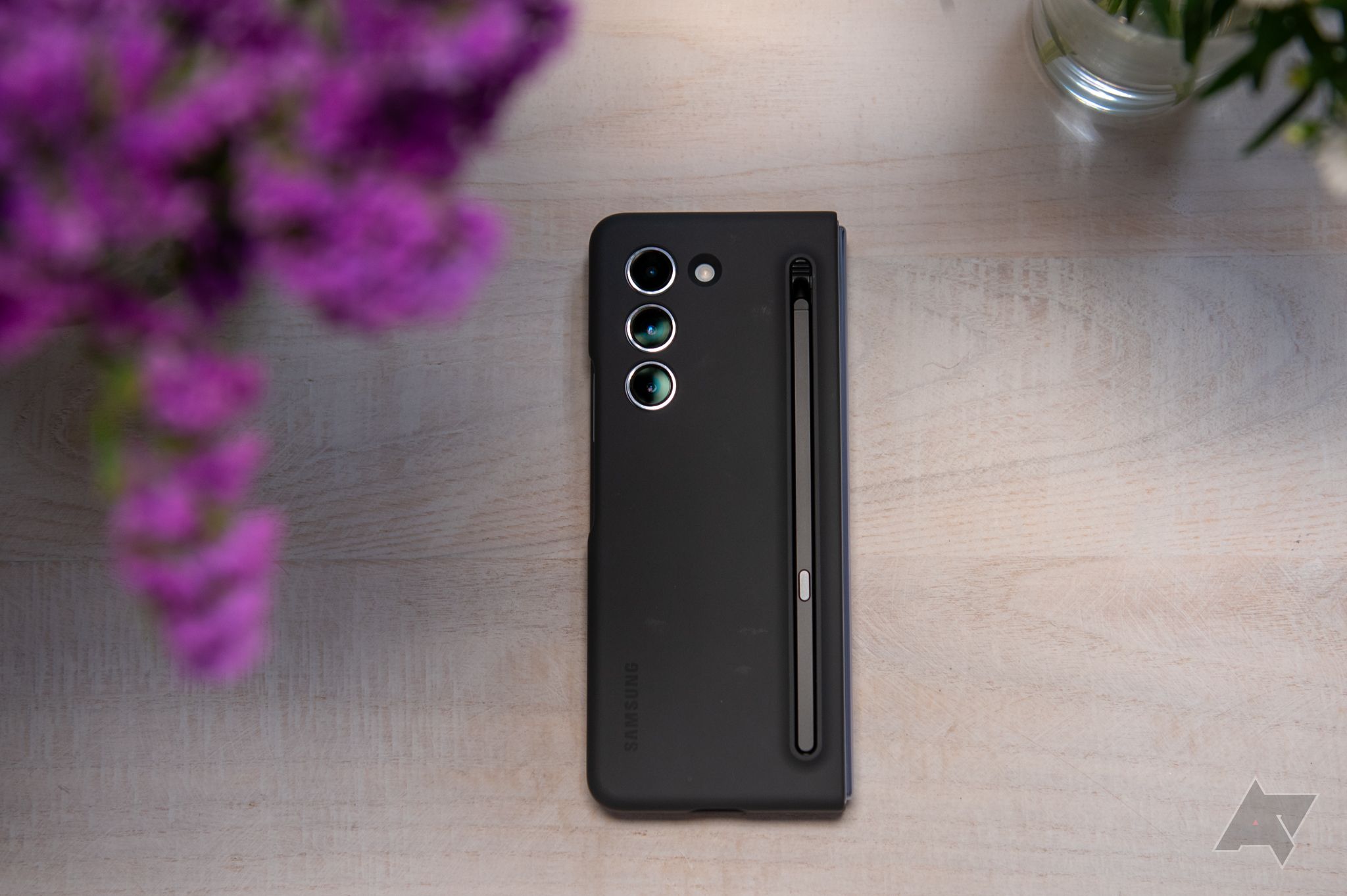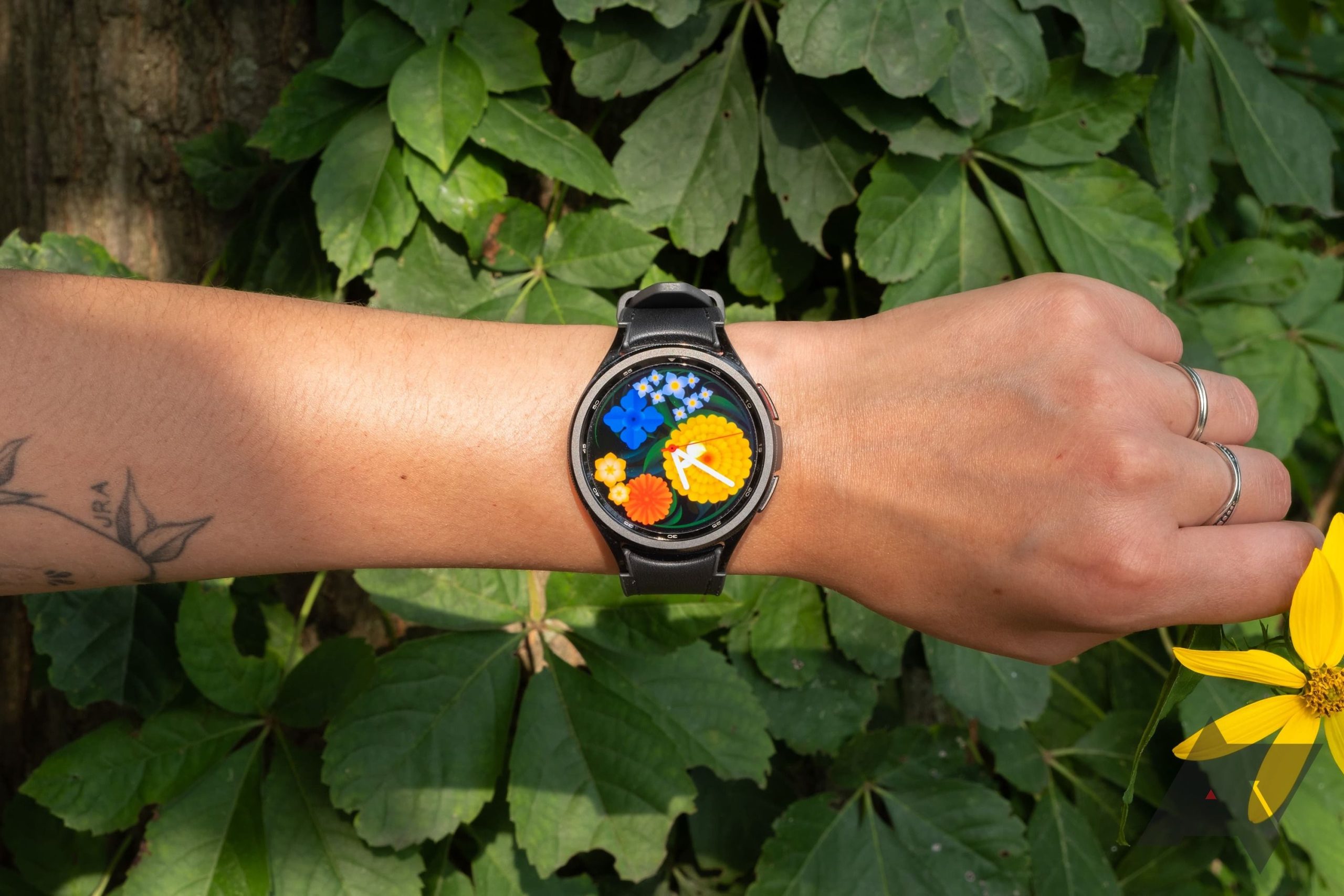Smartwatches and fitness trackers comprise advance a long capability since the first Fitbit nearly invented the up-to-the-minute wearables market in 2009. Wait on then, basically the most straightforward thing it is likely you’ll measure changed into once how many steps you took. About five years later, smartwatches burst onto the scene, and on the present time the ideal smartwatches can give their customers a coronary heart price, blood oxygen saturation, and skin temperature sensor on their wrist for upright a pair hundred bucks.
However despite the total up-to-the-minute advances in cell health technology, getting an upright, cuffless, smartwatch-primarily primarily based blood rigidity note into the fingers of patrons has to this level been beyond the take hang of of basically the most considerable tool manufacturers. Samsung’s Health Video show app has claimed so as to “measure” blood rigidity since 2021 on the Galaxy Stumble on 3, nevertheless it undoubtedly requires monthly recalibration with a historic cuff-primarily primarily based blood rigidity tool, and it’s not accessible in the US attributable to lack of FDA approval.
So what affords? Why is measuring blood rigidity so onerous for smartwatches? To take hang of, let’s originate with the fundamentals.
What is blood rigidity, and how is it measured?
Blood rigidity, simply build, is the pressure your blood exerts to your arterial partitions. The height (or systolic) rigidity occurs when your coronary heart contracts, forcing blood via your arteries. Between contractions is the minimum (or diastolic) rigidity. These two values — measured in millimeters of mercury (mmHg) — are your blood rigidity.
Essentially the most upright blood rigidity size is achieved by inserting a tube (cannula) into an artery and without lengthen measuring the rigidity of the blood. Here’s clearly extremely invasive and is on the total not used for routine measurements.
Essentially the most frequent invent of blood rigidity size is the auscultatory capability (from the Latin for to listen). This involves inserting a blood rigidity cuff over your brachial artery (an crucial artery to your upper arm) and inflating it except it cuts off the waft of blood. The rigidity is released and somebody (customarily a scientific skilled) takes level to of the rigidity when the sound of your blood waft resuming is heard (systolic rigidity) and when the sound of your turbulent blood waft can now not be heard (diastolic rigidity).
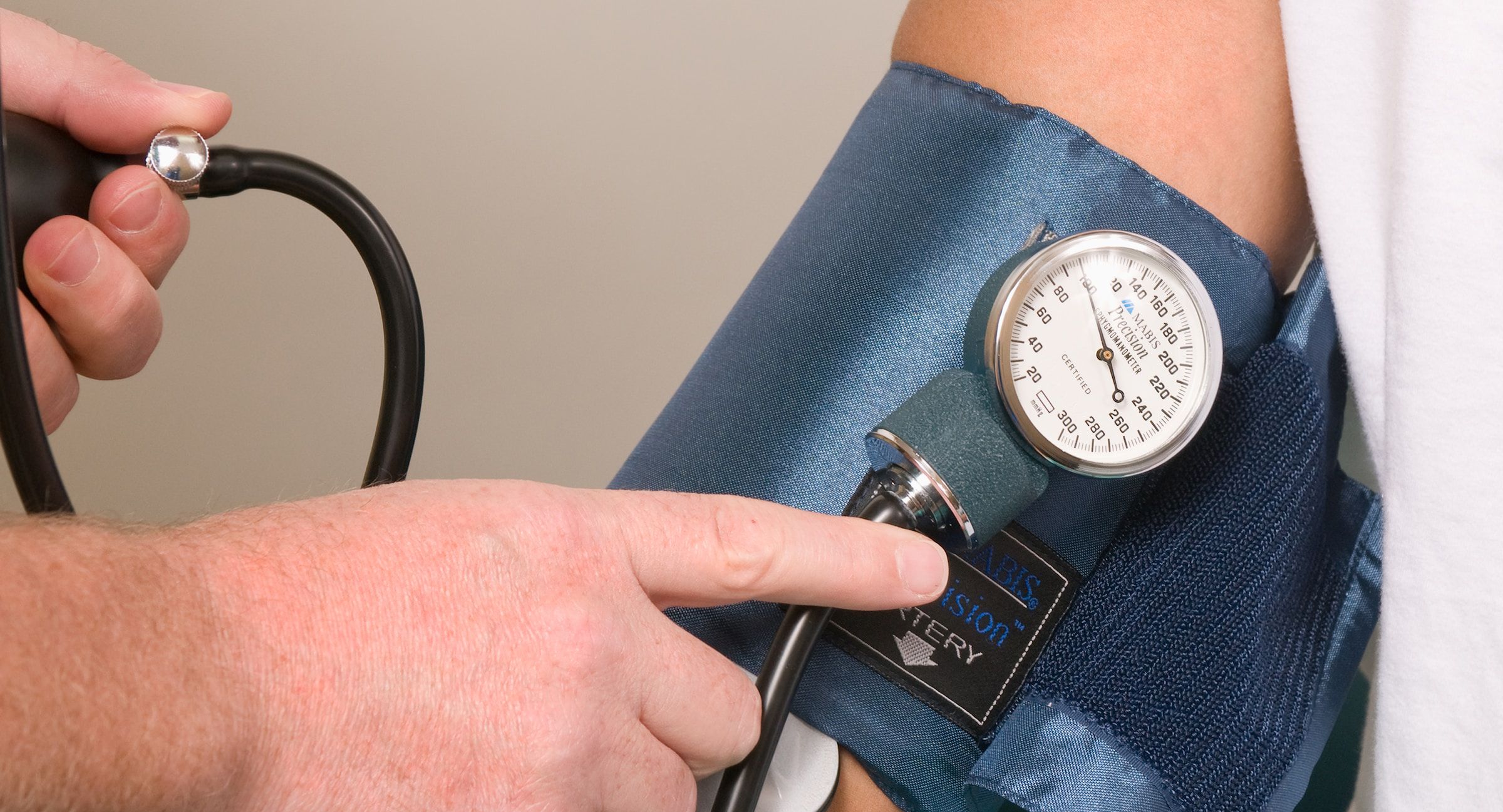
Electronic blood rigidity gadgets work in a the same manner. As with the auscultatory capability, a cuff is inflated except it blocks blood waft. Because the rigidity is slowly released and blood waft resumes, rigidity shows in the cuff measure the oscillations of the heartbeat rigidity. In step with the height rigidity of the heartbeat and the rigidity of the cuff, the systolic and diastolic rigidity might furthermore be estimated to high accuracy.
Why is sparkling your blood rigidity crucial?
In a observe: hypertension.
“Excessive blood rigidity, or hypertension, is in total the first ticket of heart problems,” says Dr. Tammy Brady, Medical Director of the Pediatric Hypertension Program at Johns Hopkins University. “Across the globe, over a thousand million folks raise a prognosis of hypertension which is the leading reason for morbidity and mortality associated to heart problems.” In the US, heart problems has been the leading reason for dying since 1950, accounting for nearly 700,000 fatalities in 2021 by myself. Globally, that quantity rises to almost 18 million.
|
Blood rigidity category |
Systolic rigidity |
and/or |
Diastolic rigidity |
|---|---|---|---|
|
Peculiar |
<120 mmHg |
and |
<80 mmHg |
|
Elevated |
120–129 mmHg |
and |
<80 mmHg |
|
Hypertension Stage 1 |
130–139 mmHg |
or |
80–89 mmHg |
|
Hypertension Stage 2 |
>140 mmHg |
or |
>90 mmHg |
|
Hypertensive Crisis |
>180 mmHg |
and/or |
>120 mmHg |
Source: American Coronary heart Association
When blood strikes via your circulatory gadget with too great pressure and hump, it will wretchedness the interior of your veins and arteries. Cholesterol forms plaques along these broken areas which constrict the blood waft, extra raising the blood rigidity ensuing in extra wretchedness and extra constriction. If this sounds depraved, that’s because it is. Excessive blood rigidity can reason your arteries to bulge (aneurysm) or break. The constriction and plaque buildup it causes for your circulatory gadget can reason an arterial blockage (embolism) battling blood from reaching crucial aspects of your physique. All of these eventualities are perhaps lethal and require scientific intervention to address.
Compounding all of here is the truth that there are no outward signs for hypertension. It doesn’t reason complications, chest pain, nostril bleeds, or dizziness. Per Dr. Brady, “many folk perform not know they comprise hypertension which ends in skipped over alternatives for medicine and prevention of cardiovascular events.” Therefore, basically the most straightforward capability to know for certain is to on a conventional basis check your blood rigidity.
Unfortunately, most folk easiest measure their blood rigidity when visiting a health care provider’s office, which expenses time and money. On high of that, scientific doctors need to address the confounding outcomes of “white coat syndrome,” a upward push in blood rigidity attributable to physician-introduced about anguish.
Given these challenges, and the large public health affect of hypertension and coronary heart disease, smartwatch makers are heavily motivated to manufacture blood rigidity monitoring accessible on their gadgets.
Measuring blood rigidity with photoplethysmography
Most research into cuffless blood rigidity monitoring has centered on the foundation of utilizing records from the coronary heart price and blood oxygen saturation shows that are already frequent on most smartwatches. These sensors expend a scheme called photoplethysmography (PPG) to measure the swap in quantity for your blood vessels over time utilizing an LED and a lightweight sensor. The complicated bit is the supreme blueprint to flip the records gathered into one thing that could furthermore be used to compute blood rigidity. And while there’s no one glaring “true” capability to perform it, we perform comprise a pair of alternatives:
Pulse Wave Analysis
Samsung, which affords blood rigidity measurements by process of its Samsung Health Video show app in dozens of countries (most particularly in the European Union), estimates blood rigidity with a scheme called pulse wave prognosis (PWA). The major belief is that a closer quantity of blood passing via your arteries equates to a closer blood rigidity. The wide jam with this gadget is that these measurements easiest reward a relative swap in blood rigidity — it will’t order you your absolute blood rigidity (as traditionally expressed in millimeters of mercury). As a blueprint to even fabricate an upright wager, it has to be calibrated with a historic blood rigidity tool once a month.
Pulse Arrival Time
One other standard scheme uses a metric incessantly called pulse arrival time (PAT) to estimate blood rigidity. PAT is the measure of the time between the height of your electrocardiogram (ECG) and the height of your PPG. The shorter your PAT, the upper your blood rigidity. Esteem PWA, PAT can easiest order you relative adjustments in blood rigidity, so it furthermore requires traditional recalibration with a historic blood rigidity tool.
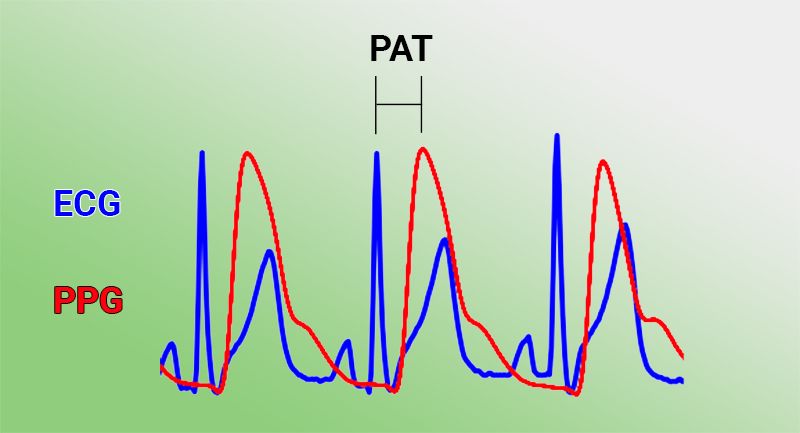
PAT-primarily primarily based blood rigidity measurements were spherical since not much less than 1993, when Casio released the BP-100 — a wristwatch with a PPG and ECG sensor. Fitbit itself launched a witness to analyze the accuracy of blood rigidity readings utilizing PAT in 2021, nevertheless it undoubtedly has but to put up any outcomes.
Pulse Transit Time
Corresponding to PAT, pulse transit time (PTT) measures the time it takes for a pulse wave to journey between two aspects of your physique. There are a pair of suggestions to perform this, nevertheless they all depend upon the identical underlying principles. One capability is to make expend of two separate PPG sensors and measure the time it takes for a pulse wave to transit the two aspects.
Some researchers comprise proposed the usage of seismocardiography (SCG — measuring the vibrations ended in by the coronary heart) and ballistocardiography (BCG — measuring the physique actions ended in by the coronary heart) to manufacture the first time level in a PTT size. These tactics would expend the accelerometers for your smartwatch to detect the SCG or BCG signal of when your coronary heart beats, and compare the timing of that to the PPG signal to your wrist to search out the PTT. Researchers comprise already developed a proof-of-belief smartphone app to level to the feasibility of this gadget.
Esteem PWA and PAT, PTT requires traditional calibration with a historic blood rigidity tool to withhold accuracy over time. There were no client gadgets launched but which expend PTT to estimate blood rigidity.
Why all these suggestions are problematic
One among the largest drawbacks to these tactics is their reliance on the PPG signal. Even though the PPG sensors in smartwatches are extra upright than they’ve ever been, they’re aloof topic to a ton of interference. Movement, sweat, temperature, and even skin color can affect the usual of the PPG signal, in flip having a detrimental affect on the accuracy of any blood rigidity measurements in accordance to that signal.
These suggestions will not be in accordance to any customarily accredited physiological principles.
Even perhaps worse, in accordance to the University of Pittsburgh’s Dr. Ramakrishna Mukkamala, “these suggestions will not be in accordance to any customarily accredited physiological principles.” Dr. Mukkamala is an skilled on computational physiology and has written broadly on cuffless blood rigidity monitoring. He observes that “the PAT and PWA suggestions have not been convincingly confirmed to give any label in blood rigidity size accuracy.”
Blood rigidity is furthermore a in actual fact fickle metric. Measuring it at varied places on the physique will yield varied outcomes. As soon as calibrated, you’ll need to measure your blood rigidity with your smartwatch/PPG sensor on the identical height relative to your coronary heart. A swap of upright a pair of inches can suggest a swap in rigidity of 10 mmHg or extra, which is the adaptation between wholesome and hypertension.
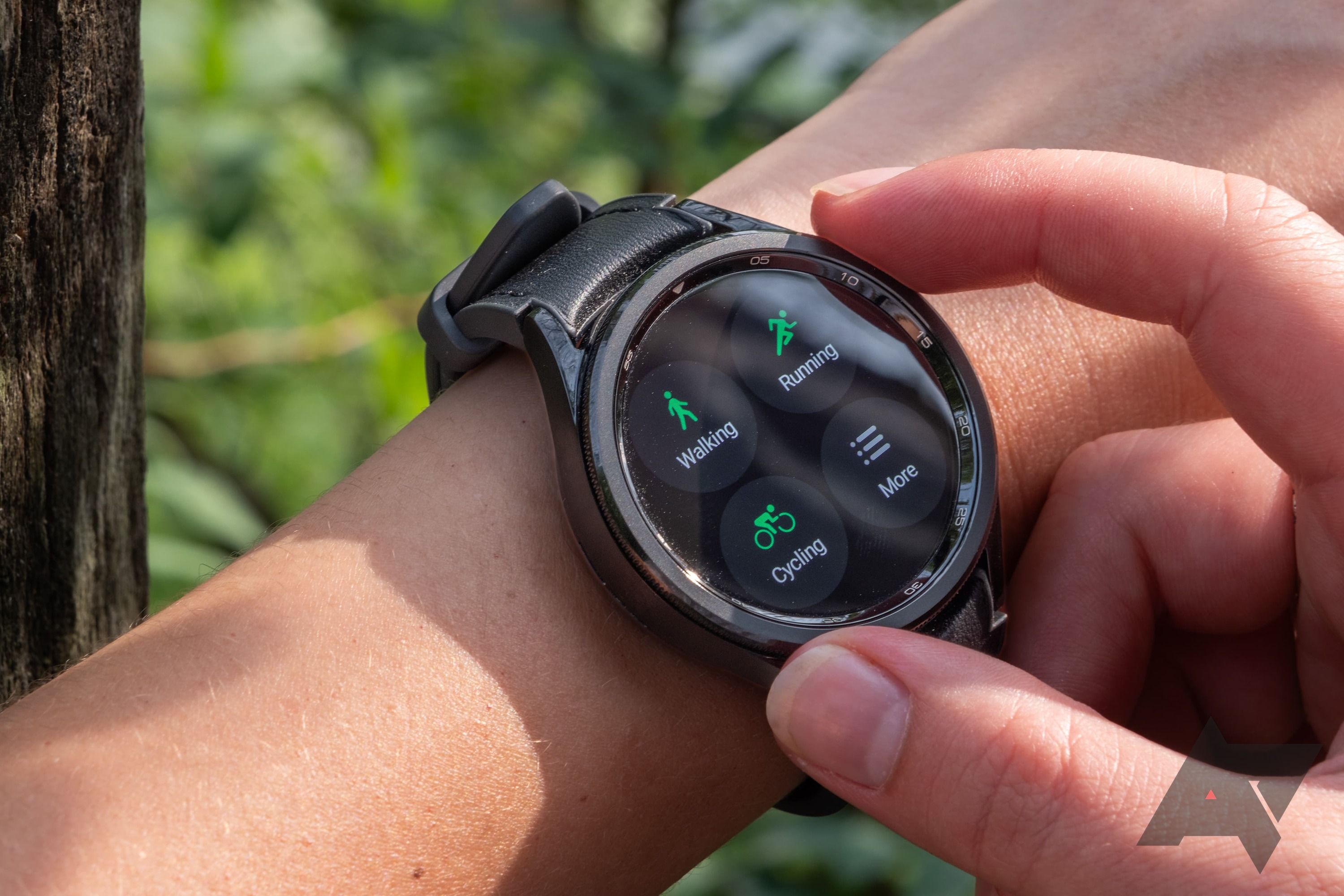
Getting it true
Given the dire penalties of hypertension, it’s no marvel that smartwatch makers need to get it true. Underreporting blood rigidity might lead somebody to construct off standard of living adjustments or a seek recommendation from to the physician that might build their life. Here’s why the total wide players are expecting FDA approval before they fabricate their substances accessible in the US. And even if all the pieces’s working smartly, that invent of thing tends to be slack to advance, as the FDA is very particular about what this can and obtained’t enable on the market with out regulations and oversight.
Per the FDA’s James McKinney, “what the tool claims to perform is obligatory in figuring out if [it] is actively regulated by the FDA.” Most incessantly, the scope of what the producer tells potentialities its tool is supposed for determines the blueprint in which it’s regulated. Arrangement that’s easiest for traditional wellness, reminiscent of serving to to tumble some weight, arrange stress, or note sleep, in total doesn’t build of abode off the FDA’s radar. Which capability that measuring coronary heart price to trace your inform is okay, nevertheless measuring your coronary heart price to assist diagnose arrhythmia requires the FDA’s blessing.
At the starting up watch, tracking blood rigidity would appear to tumble under the umbrella of traditional wellness, nevertheless when in contrast to other crucial signs, blood rigidity is a chunk varied. “Blood rigidity is actionable,” Dr. Mukkamala explains. In case your coronary heart price appears to be like fairly high or your SpO₂ appears to be like fairly low, there’s not fairly a pair of diagnostic utility in these metrics. On the opposite hand, when you occur to take your hypertension readings to your physician, she’ll in a immediate time get an acceptable medicine for you. “The FDA chooses to control blood rigidity size with the aim of guaranteeing that gadgets lead to factual treatment,” says Dr. Mukkamala.
And the FDA takes blood rigidity gadgets very severely. To get that coveted FDA approval, smartwatches need to fulfill accuracy requirements laid out by the Association for the Advancement of Medical Instrumentation’s Sphygmomanometer Committee (of which Dr. Brady happens to be co-chair). “Long story immediate,” she tells me, “continuous cuffless gadgets aren’t engaging for prime time but.”
Looking out into the future
Despite these challenges, the capability forward for smartwatch-primarily primarily based, cuffless blood rigidity monitoring in actual fact looks moderately shining. Many OEMs will continue to pursue PWA- or PAT-primarily primarily based suggestions just because PPG sensors (that are accountable for figuring out coronary heart price and SpO₂) are customary on on the present time’s wrist-primitive wearables — even if much less than ideally suited, if they’re there, might as smartly take revenue of them. The accuracy of these tactics might just not be up to the FDA’s rigorous requirements true now, nevertheless as recent research continues to be published, it’s not unthinkable that they’ll rapidly be customary.
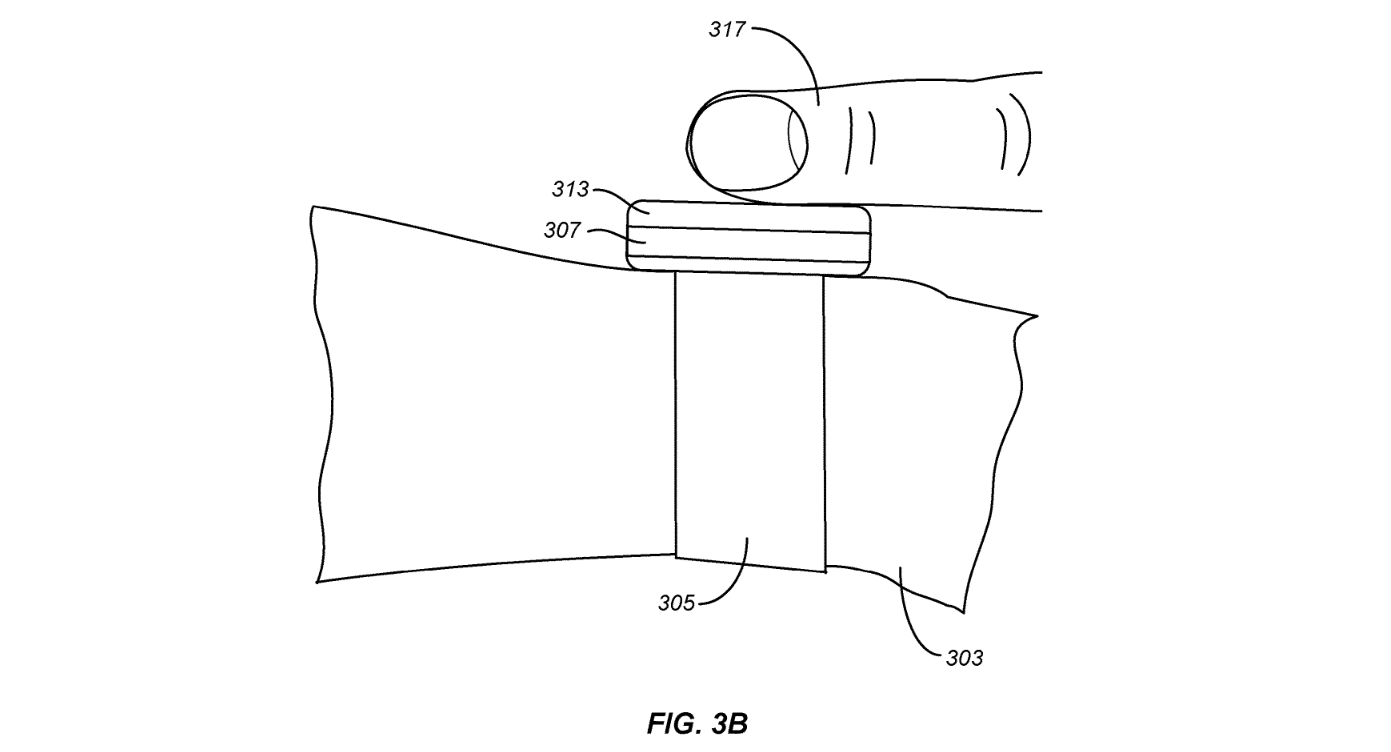
Modern tactics are furthermore emerging that could obviate the need for calibration altogether. A 2018 paper (co-authored by Dr. Mukkamala) published in Science Translational Treatment outlines a mode for measuring blood rigidity utilizing a varied combination rigidity and PPG sensor which is in accordance to the oscillometric capability used by automatic blood rigidity machines. What’s extra, the team in the encourage of the paper constructed a working prototype in a smartphone invent ingredient. The person presses the side of their finger in opposition to the rigidity/PPG sensor, compressing a little artery in the finger. An onscreen interface then guides them in making expend of the true rigidity (analogous to a blood rigidity cuff) while the PPG sensor (analogous to a pulse rigidity sensor) tracks their pulse wave.
Even though this research is five years broken-down at this level, the technology might just rapidly be on our doorstep. Wait on in January, Fitbit filed a patent for a smartwatch with this tech constructed into it. Tellingly, one among the authors of the 2018 article, Keerthana Natarajan, has since left academia to affix the Fitbit team in San Francisco.
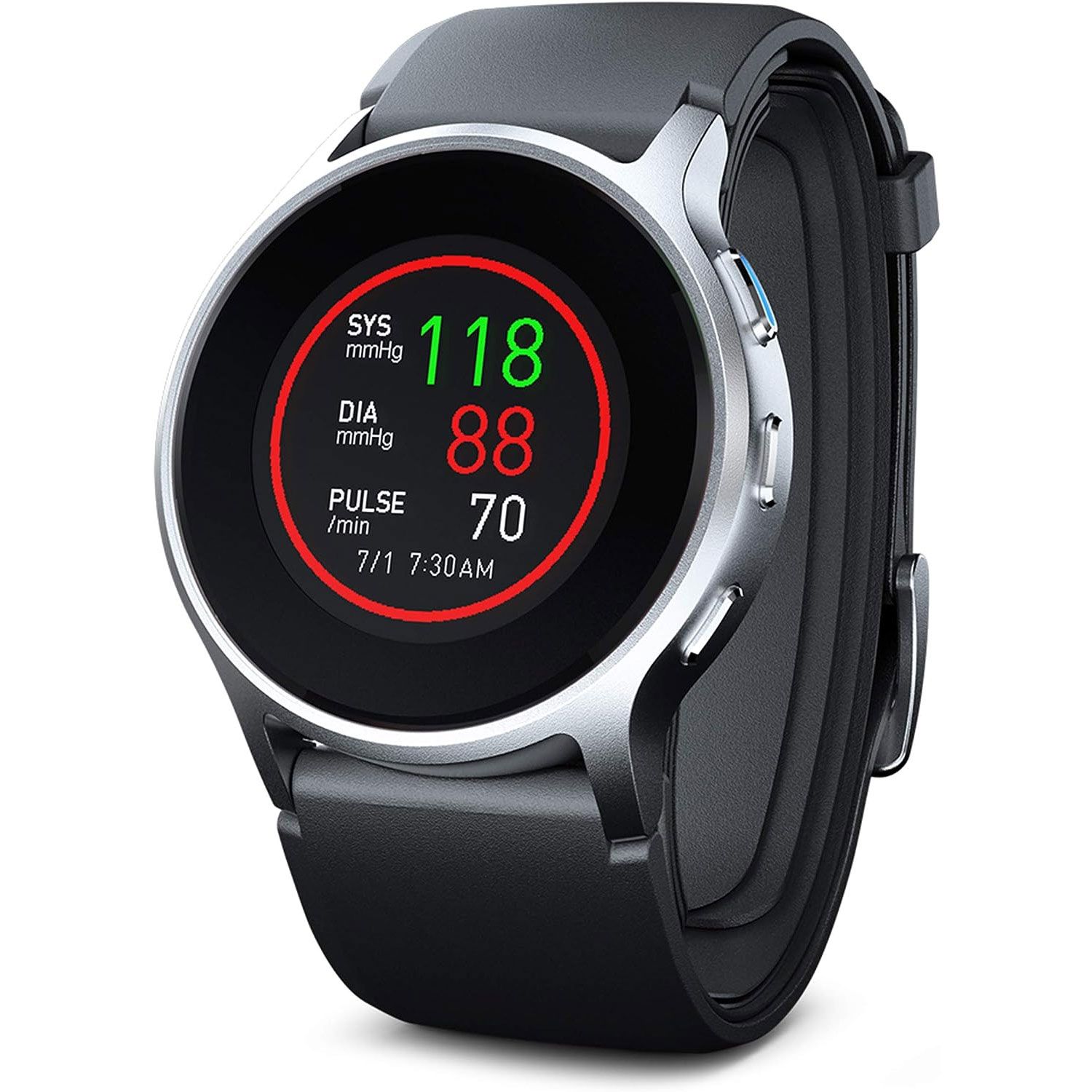
Omron HeartGuide
Omron’s HeartGuide is one among the few wearables able to moderately upright blood rigidity size, thanks to the presence of an inflating cuff embedded inside of the see’s strap. Available for your quantity of two wrist sizes, the HeartGuide can add precious records to your health tracking efforts.
As of 2023, basically the most straightforward smartwatch accessible to patrons that has FDA approval to measure blood rigidity is the Omron HeartGuide which in actual fact uses a minute inflatable cuff. What has but to be achieved, and what public health consultants dream of, is a cuffless smartwatch that might present on-build a query to of or continuous blood rigidity monitoring. If the sort of tool was accessible, “[it] might very a lot assist with efforts to decrease hypertension and heart problems,” says Dr. Brady. Given the confluence of breakthrough research, cutting edge technology, and machine studying, that dream shall be upright all over the corner.
Bibliography
- American Coronary heart Association — Knowing Blood Stress Readings
- American Coronary heart Association — Health Threats from Excessive Blood Stress
- Nationwide Library of Treatment — What is blood rigidity and how is it measured?
- Philip S. Lewis — Oscillometric size of blood rigidity: a simplified rationalization
- Facilities for Disease Adjust and Prevention — Coronary heart Disease Details
- World Health Organization — Cardiovascular diseases
- Ramakrishna Mukkamala, George S. Stergiou, and Alberto P. Avolio — Cuffless Blood Stress Measurement
- Meals and Drug Administration — Overall Wellness: Coverage for Low Risk Units
- Meals and Drug Administration — Instrument Arrangement Functions Including Mobile Medical Functions

